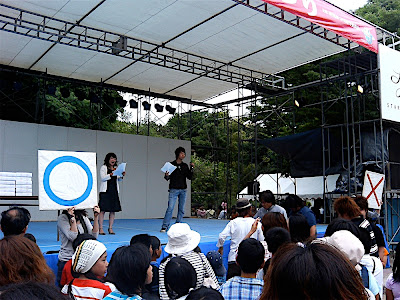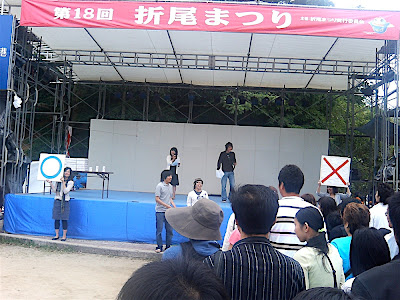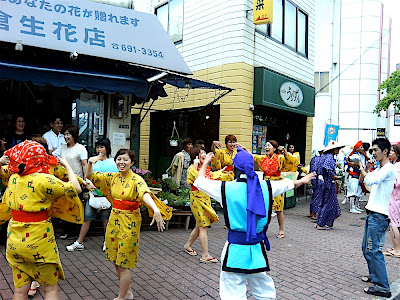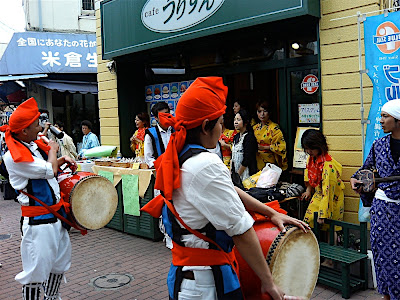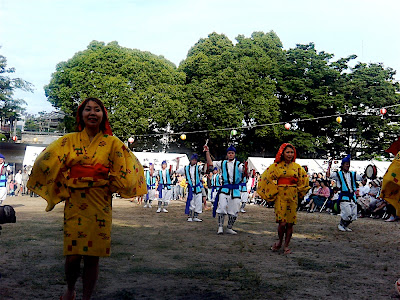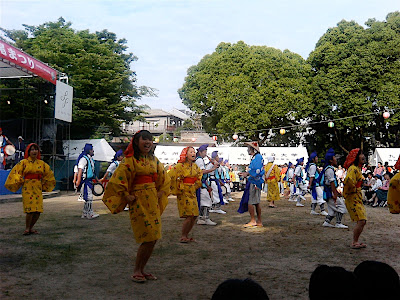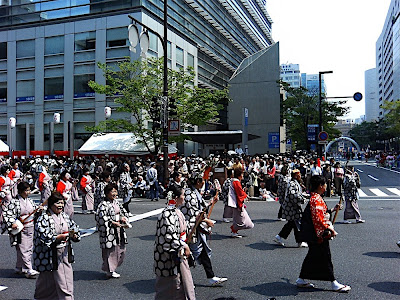El otro día en las fiestas de Orio, antes de reunirme con Carlos, participé en un curioso concurso que parece ser tipico de este tipo de festivales. Los presentadores dicen una frase y, según consideremos que es verdadera o falsa, hay que ponerse en el lugar correspondiente (el círculo significa verdadero, la cruz significa falso).
この間折尾祭でカルロスと合流する前に初めてこういうクイズに参加してみた。ルールは簡単:司会者が問題を言って、正しいと思う人は◯の看板の前に行って、違うと思う人は×の前に行く。不正解者はすぐアウトになって、だんだん参加者が減っていく。
Last Saturday at Orio Matsuri before meeting Carlos, I joined a particular (but typical) quiz. The rules were simple: You listen to a supposed fact, and you have to go to the «O» zone if you think it’s true, or to the «X» zone if you think it’s false. People in the wrong answer zone lose the game and can’t play any further.
Las primeras preguntas eran tan fáciles como recordar los nombres de los presentadores, que se habían presentado a ellos mismos minutos antes, pero poco a poco se fueron haciendo más difíciles. Una pregunta más típica fue, por ejemplo, «La casa de Sazae-san solo tiene planta baja». Donde Sazae-san es una una de las series de televisión más longevas del mundo.
最初の質問は司会者の名前なので簡単だったけど(自己紹介したばかりだったので)だんだん難しくなってきた。例えば「サザエさんの家には二階がない」とかそういう豆知識みたいな問題がいっぱいあった。
The first questions were quite easy, being the names of the guy and girl asking the questions (who had just introduced themselves to us), but the following questions weren’t as cheap. An example of a question is «Sazae-san’s house doesn’t have a second floor», referring Sazae-san, one of the longest-running TV series in history.
Y la segunda foto es de cuando lanzaron la pregunta «en Japón se puede asistir al jardín de infancia hasta los 18 años». Como veis, estábamos casi todos en la posición de «falso». ¡Pues no! Era verdadero. El 90% de los participantes nos caímos con esta pregunta tan sorprendente como irrelevante, pero eso es lo que mola de este tipo de juegos.
また2枚目の写真は「保育園は18歳まで通える」という問題のときの参加者の様子。ご覧の通り、ほとんどみんなが×のところに行っていた。しかしなんと正解は、◯だった!日本では保育園は18歳まで通っていいらしい。この問題で参加者はほぼ全滅になった。自分ももちろん。
And the second picture shows the field when the question was «in Japan, one can attend nursery school until one is 18 years old». As you can see, most of us answered «false». But it was actually true! Only a few people were left after this question.

